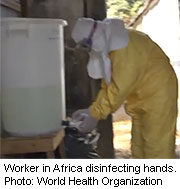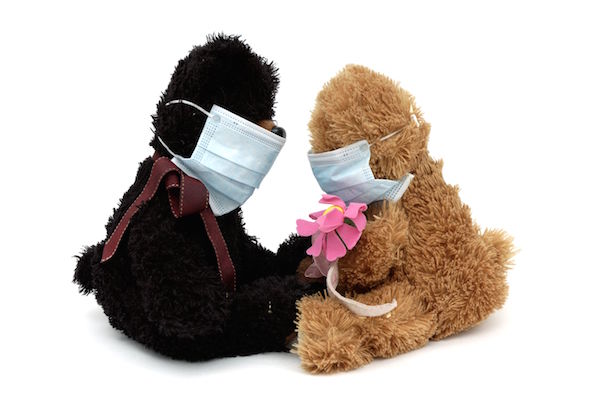
THURSDAY, Aug. 28, 2014 (HealthDay News) — The deadly Ebola outbreak hitting four West African nations could eventually infect more than 20,000 people, the World Health Organization announced Thursday.
Already the largest Ebola outbreak ever, the viral infection has produced 3,069 cases so far and killed 1,552 people in Guinea, Liberia, Nigeria and Sierra Leone.
Nearly 40 percent of the total number of reported cases have occurred in the past three weeks, the health agency said.
“This far outstrips any historic Ebola outbreak in numbers. The largest outbreak in the past was about 400 cases,” Dr. Bruce Aylward, WHO’s assistant director-general for emergency operations, said at a news conference, the Associated Press reported.
Part of the problem, he said, is that the outbreak is occurring in large cities and broad sections of the affected countries.
“What we are seeing today, in contrast to previous Ebola outbreaks: multiple hotspots within these countries — not a single, remote forested area, the kind of environments that have been tackled in the past. And then not multiple hotspots within one country, but international disease,” Aylward said.
In response to the crisis, the U.N. health agency unveiled a battle plan Thursday that calls for stopping Ebola transmissions within six to nine months, while “rapidly managing the consequences of any further international spread,” the WHO said in a news release.
The plan calls for spending $489 million over the next nine months and enlisting 750 international workers and 12,000 national workers, the AP reported.
Also Thursday, the U.S. National Institutes of Health (NIH) said it would begin testing an experimental Ebola vaccine in humans next week. It will be tested in 20 healthy adults in Maryland to see if it’s safe and able to produce an appropriate immune system response.
The vaccine was developed by the U.S. National Institute of Allergy and Infectious Diseases and drug maker GlaxoSmithKline. It will also be tested on healthy volunteers in Great Britain and the West African nations of Gambia and Mali, the NIH said.
Earlier this week, Dr. Thomas Frieden, director of the U.S. Centers for Disease Control and Prevention, visited Guinea, Liberia and Sierra Leone, where he acknowledged that the virus currently has the “upper hand” in the outbreak.
“Lots of hard work is happening, lots of good things are happening,” Frieden said during a meeting in Liberia, the AP reported. “But the virus still has the upper hand.”
“Ebola doesn’t spread by mysterious means, we know how it spreads,” he said. “So we have the means to stop it from spreading, but it requires tremendous attention to every detail.”
Unlike diseases such as tuberculosis or flu, Ebola isn’t spread by breathing air from an infected person. Transmission requires direct contact with blood, secretions, organs or other body fluids of infected living or dead persons or animals, according to the WHO.
Ebola, one of the world’s most virulent diseases, kills up to 90 percent of people it infects. Symptoms include a sudden fever, intense weakness, muscle pain, headache and sore throat. This is followed by vomiting, diarrhea, rash, poor kidney and liver function and, in some cases, both internal and external bleeding.
Many of those killed during the current Ebola outbreak have been health care workers.
According to the CDC, health care workers must be able to recognize a case of Ebola and be ready to use “isolation precautions or barrier nursing techniques.” Barrier nursing techniques include:
- wearing protective clothing, such as masks, gloves, gowns, and goggles;
- using infection-control measures, including complete equipment sterilization and routine use of disinfectant;
- isolating patients with Ebola from contact with unprotected persons.
The aim of these techniques is to avoid contact with the blood or secretions of an infected patient, the CDC said.
More information
For more on Ebola virus, visit the U.S. Centers for Disease Control and Prevention.
Copyright © 2025 HealthDay. All rights reserved.

